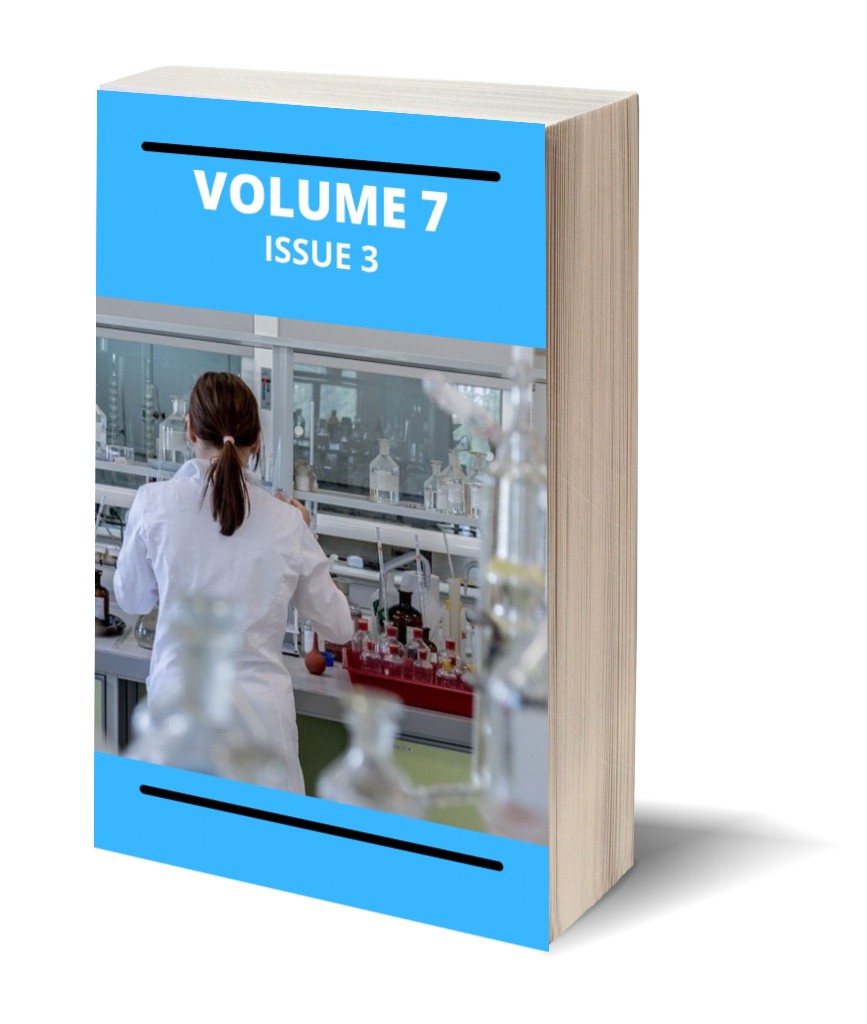Hydrochemical study of shallow ground water in Ikot Abasi Coastal Aquifer
Keywords:
Coastal aquifer, coastal plain sands, Groundwater, hydrochemical study, Ikot Abasi Coastal aquiferAbstract
Authors: Usoro M. Etesin and Iniemem J. Inim
A hydrochemical study of shallow groundwater in Ikot Abasi coastal aquifer, Niger Delta, Nigeria, was undertaken, to assess the impact of incidences of oil bunkering, crude oil refining activities, burning of natural gas for power generation and aluminum smelting activities. Six groundwater samples were collected from existing boreholes at different stations, for dry and wet seasons respectively. The water samples were analyzed for temperature, pH, cations (Ca2+, Na+, K+ and Mg2+) , anions (chloride, sulphate, nitrate and bicarbonate ), total dissolved solids (TDS), electrical conductivity (EC), salinity, alkalinity and total hardness , bicarbonate (HCO3-) and alkalinity, using standard analytical procedures by American Public Health Association. To establish the water types in the study area, the test results acquired for exchangeable cations and nutrients were subjected to Piper Plot, Durov Plot, and Gandha Plot for two seasons. The Piper Plot developed from experimental data revealed that water facies in Ikot Abasi aquifer are confined to only two types, with the majority of the samples having 67 percent plotted in the Ca-Mg-Cl water type, while 23 percent of the samples showed Na –Cl water type, which suggests freshness of the water with minor contribution from saline contribution. However, the Chandha plot for the groundwater indicated that within the study area 66.6 percent of the samples plot are within subfields-5, representing Ca2+ - Mg2+ - HCO3- water type, while 33 percent were of the samples plot within subfield -4, which is an indication of the presence of a significant concentration of acidic ions over weak anions, signifying strong acidic anions in the water exceeding weak acidic anions. Also, the observed pattern for the results of the Durov plot reveals that 66 percent of the samples plot are in the reverse ion exchange zone and therefore suggest the occurrence of inverse /reverse ion exchange process occurring, due to due the direct exchange of calcium ion and magnesium ions from the aquifer matrix in addition to sodium and potassium ions from the groundwater. While 33 percent of samples plot along the dissolution or mixing line. Based on the Lloyd and Heathcoat classification, the result can be aligned to recent fresh recharged of the water characterized by simple dissolution or mixing without the domination of major ions, and can be attributed to fresh recent recharged water exhibiting simple dissolution or mixing with no dominant major anions and cations. In spite of the shallow depth of the aquifer in the study area, there is no observed contamination of the water. Although the aquifer in Ikot Abasi has shallow depths of between 1.8m to 8.4 m, the concentrations of lead, cadmium, mercury, arsenic, zinc, and manganese are below the permissible limits of 0.05 mg/L, except iron content which has values above the permissible limit of 0.3 mg/l. The waters have mean salinity of 0.01 %, indicating no saltwater intrusion even though the study area is coastal. The calculated mean pollution index also suggests the absence of contamination from anthropogenic activities. The distribution of major anions, cations, and occurrence of different hydrochemical facies suggest that the composition of the groundwater is significantly influenced by water-rock interactions.
Downloads
Published
Issue
Section
Most read articles by the same author(s)
- Godwin J. Udo, Usoro M. Etesin, Joachim J. Awaka-Ama, Aniedi E. Nyong, Emaime J. Uwanta, GCMS and FTIR Spectroscopy Characterization of Luffa Cylindrica Seed Oil and Biodiesel Produced from the oil , Communication In Physical Sciences: Vol. 5 No. 3 (2020): VOLUME 5 ISSUE 3
Similar Articles
- Eteyen A. Uko, Emem I. Ntekpere, Microbial Contamination of Infant Diapers , Communication In Physical Sciences: Vol. 6 No. 1 (2020): VOLUME 6 ISSUE 1
- Enock Aninakwah, Isaac Aninakwah , Emmanuel Yeboah Okyere, Quantitative Analysis of Plastic Waste Accumulation in Coastal Ghana: Implications for Waste Management , Communication In Physical Sciences: Vol. 12 No. 3 (2025): VOLUME 12 ISSUE 3
- Henry Ekene Ohaegbuchu, Obinna Christian Dinneya, Chukwunenyoke Amos-Uhegbu, Paul Igienekpeme Aigba, Groundwater quality index (GQI) assessment of 12 wells in a rural area , Communication In Physical Sciences: Vol. 10 No. 2 (2023): VOLUME 10 ISSUE 2
- Dorathy Edet Etim, Nnamso Effiong Essien, Aniebiet Mmekuwem Essien, Impacts of Acute Toxicity of Heavy Metals (Hg And Pb) On Liver Enzymes of Normal Albino Wistar Rats , Communication In Physical Sciences: Vol. 11 No. 4 (2024): VOLUME 11 ISSUE 4
- Aniekan Udongwo, https://dx.doi.org/10.4314/cps.v12i2.17 , Communication In Physical Sciences: Vol. 12 No. 2 (2025): VOLUME 12 ISSUE 2
- Mahmood Umar, Zubairu Ahmed, Abdullahi Mohammed Wanzan, Musa Sa'aud, Electrical Resistivity Tomography Investigation of Groundwater Contamination Pathway at Ahmadu Bello University Sewage Treatment Site. , Communication In Physical Sciences: Vol. 11 No. 1 (2024): VOLUME 11 ISSUE 1
- Abiodun Rasheed Omokanye, Benefit Onu, A Multi-Source Analysis of Water Supply Challenges in Offa Local Government Area, Kwara State, Nigeria , Communication In Physical Sciences: Vol. 11 No. 2 (2024): VOLUME 11 ISSUE 2
- Eteyen Uko, Microbiological Analysis and Antibiogram of Blood Pressure Cuffs in Some Primary Health Centres in Ikot Ekpene Metropolis, South- South Nigeria , Communication In Physical Sciences: Vol. 12 No. 6 (2025): Volume 12 ISSUE 6
- Ubong Ime Essien, Anduang Odiongenyi, Clement Obadimu, Iniobong Enengedi, Investigation of Snail shells as an Adsorbent and Precursor for the synthesis of Calcium Oxide Nanoparticles for the Removal of Amoxicillin from Aqueous Solution , Communication In Physical Sciences: Vol. 9 No. 4 (2023): VOLUME 9 ISSUE 4
- K. G. Ta'awu, M. C. Ekanem, A. Mairo, P. G. Udofia, Sensory and market attributes of wheat-Musa. spp-soybean (WPS) flour composite bread , Communication In Physical Sciences: Vol. 5 No. 2 (2020): VOLUME 5 ISSUE 2
You may also start an advanced similarity search for this article.




